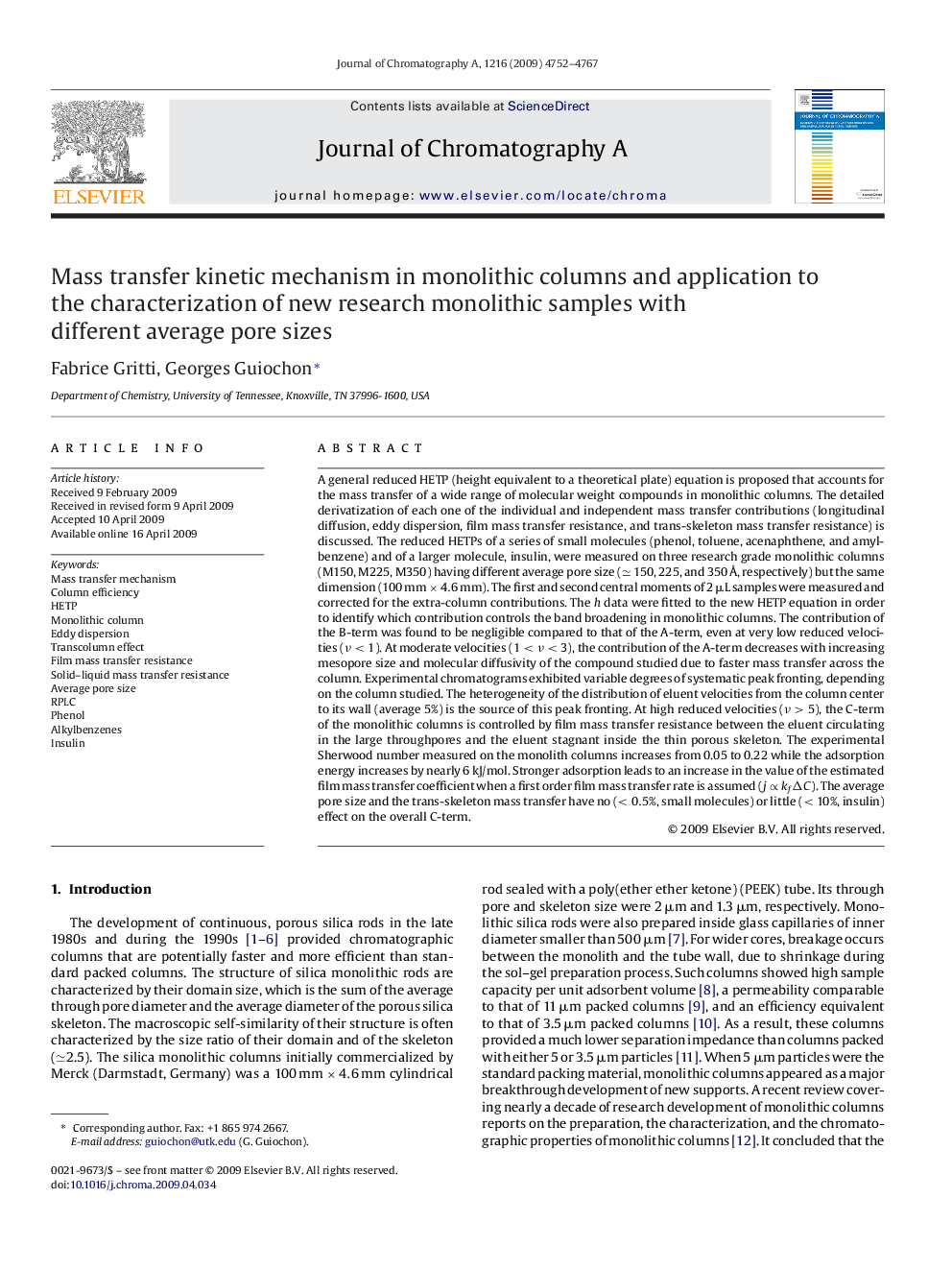| Article ID | Journal | Published Year | Pages | File Type |
|---|---|---|---|---|
| 1206198 | Journal of Chromatography A | 2009 | 16 Pages |
A general reduced HETP (height equivalent to a theoretical plate) equation is proposed that accounts for the mass transfer of a wide range of molecular weight compounds in monolithic columns. The detailed derivatization of each one of the individual and independent mass transfer contributions (longitudinal diffusion, eddy dispersion, film mass transfer resistance, and trans-skeleton mass transfer resistance) is discussed. The reduced HETPs of a series of small molecules (phenol, toluene, acenaphthene, and amylbenzene) and of a larger molecule, insulin, were measured on three research grade monolithic columns (M150, M225, M350) having different average pore size (≃150≃150, 225, and 350 Å, respectively) but the same dimension (100mm×4.6 mm). The first and second central moments of 2 μL samples were measured and corrected for the extra-column contributions. The h data were fitted to the new HETP equation in order to identify which contribution controls the band broadening in monolithic columns. The contribution of the B-term was found to be negligible compared to that of the A-term, even at very low reduced velocities (ν<1ν<1). At moderate velocities (1<ν<31<ν<3), the contribution of the A-term decreases with increasing mesopore size and molecular diffusivity of the compound studied due to faster mass transfer across the column. Experimental chromatograms exhibited variable degrees of systematic peak fronting, depending on the column studied. The heterogeneity of the distribution of eluent velocities from the column center to its wall (average 5%) is the source of this peak fronting. At high reduced velocities (ν>5ν>5), the C-term of the monolithic columns is controlled by film mass transfer resistance between the eluent circulating in the large throughpores and the eluent stagnant inside the thin porous skeleton. The experimental Sherwood number measured on the monolith columns increases from 0.05 to 0.22 while the adsorption energy increases by nearly 6 kJ/mol. Stronger adsorption leads to an increase in the value of the estimated film mass transfer coefficient when a first order film mass transfer rate is assumed (j∝kfΔC). The average pore size and the trans-skeleton mass transfer have no (<0.5<0.5%, small molecules) or little (<10<10%, insulin) effect on the overall C-term.
